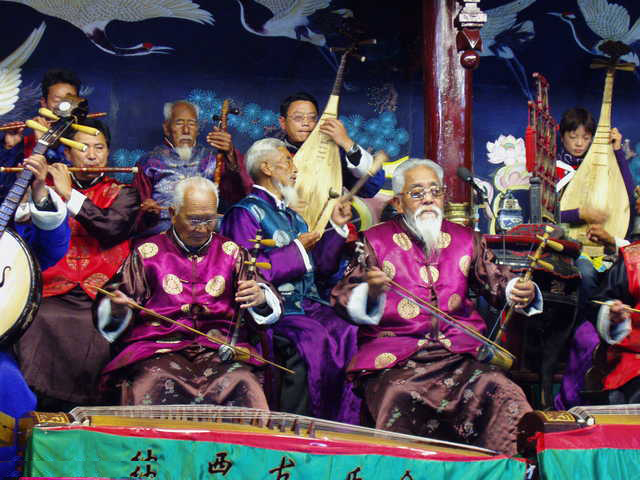Of all the provinces of China, it is Yunnan that has fascinated me most. Remote and mountainous, and forgotten by the world in the last few centuries, it once played a critical role in world history by being the first region to transmit major cultural and technological influences between East Asia and South Asia. The oldest known hominid fossils of East Asia were found there. Before the famed Silk Road was established in the north, trade and ideas wormed their way through the precipitous mountain passes of Yunnan, across northern Burma, then over the Naga hills to the valley of the Brahmaputra in India. Rice cultivation probably entered India by this route in prehistoric times, and possibly the technology of casting bronze. Some magnificent bronze art survives from the 3rd Century BCE. From that time to the Yuan era, though sometimes controlled by Tibetan or Han Chinese empires, Yunnan was most often the center of its own kingdoms, such as Dian [滇國], Nangzhao [南诏], and Dali [大理国]. A melting pot of peoples spoke various Tibeto-Burman, Tai-Kadai, and Miao-Yao languages. The historically important Bai language’s classification is disputed. These aboriginal languages survive and thrive despite the influx of Chinese speakers to the region, as do many ancient traditions. Shamanism, Taoism, Buddhism, Christianity, and even Islam have been influences on local beliefs. A synchretistic religion called Dongba, related in some way to the shamanistic Bön faith that preceded Buddhism in Tibet, is still practiced. It focuses significantly on the sacredness of trees, and once provided the spiritual basis for careful (and sustainable) practices in logging. The Communist Party attempted to crush the faith, not only for ideological reasons, but to facilitate clear-cutting and destructive exploitation of the forests. The religion, however, survives.
Most remarkably, the region independently developed writing. The Dongba Script constitutes the only hieroglyphic writing still actively maintained. The Communist Party suppressed its use, and destroyed thousands of ancient manuscripts by boiling them into paste, but many copies survived, about half of the extant ones being carried to the U.S. and Europe. This remarkable form of writing presents many interesting puzzles for linguists and paleographers [ READING, August 2013: item 23943 (Alexis Michaud) Pictographs and the Language of Naxi Rituals]. Now, belatedly, the script is being encouraged by local authorities, and appears on the sides of buses.
Of the many cultural survivals in Yunnan, it’s musical traditions stand out. I previously heard some Naxi (or Nakhi) folksongs of Yunnanese migrants in Sichuan [items 16234 and 16239 in Sichuan Folk Song and Ballad, Vol.2] and thought them particularly evocative. But the more complex classical orchestral music of the ancient kingdoms has been astonishingly preserved through all the tribulations of time. The Dayan Ancient Music Association’s album Naxi Music from Lijiang, issued by Nimbus Records in 1997, provides an aural window into antiquity. The instruments used are archaic lutes, flutes, shawms and zithers, long since vanished elsewhere. Twenty-four melodic qupai (leitmotifs) are subjected to elaboration and variation. This form is known as Baisha xiyue, literally “fine music of Baisha”, referring to an ancient capital of the Naxi, situated near modern Lijiang. The music is best described as lean and uncluttered, but elegant. There is none of the crashing pots-and-pans din associated with old forms elsewhere in China.
This is to me, a very evocative and enjoyable album, and will be replayed often.


0 Comments.